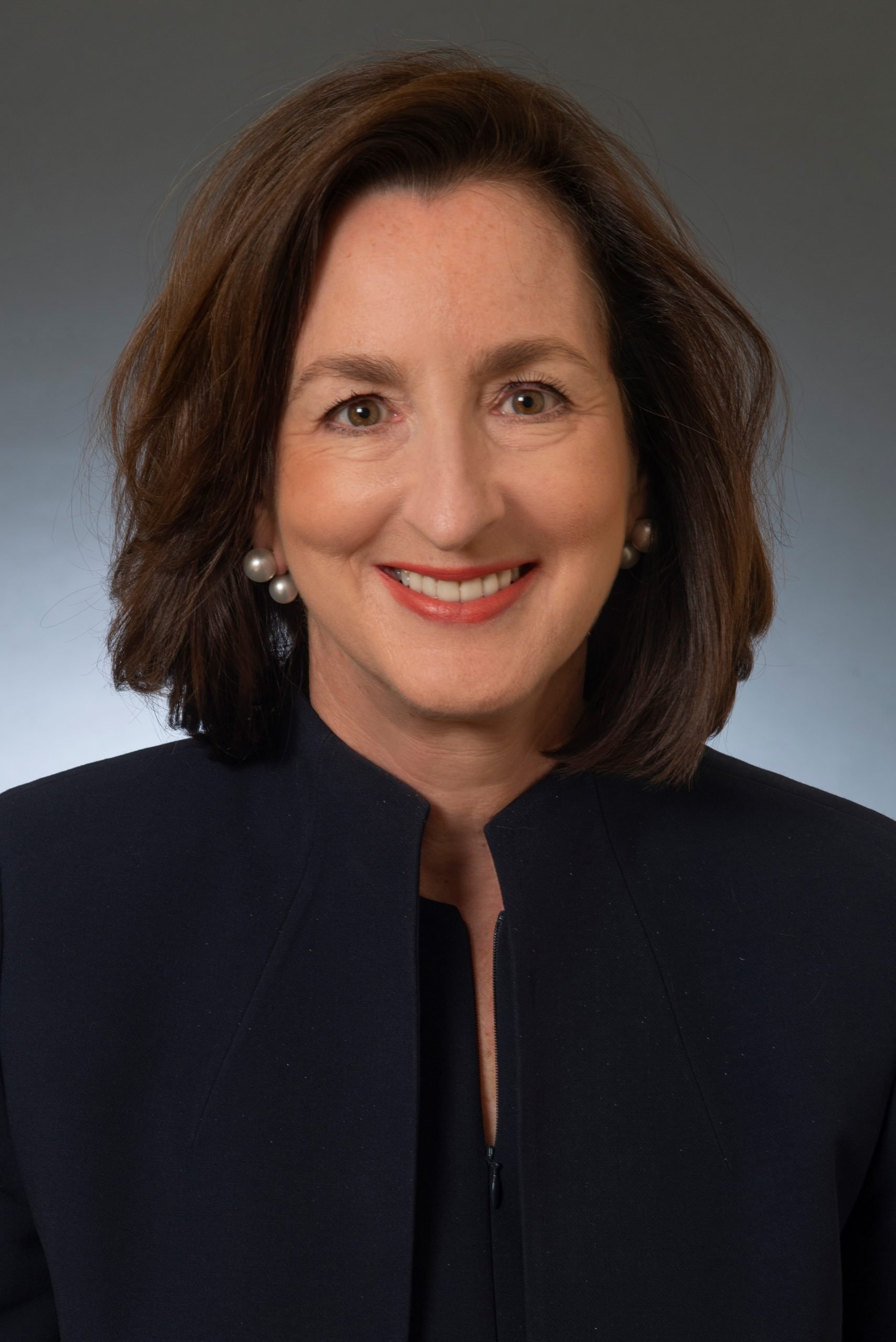There are many lessons to be learned from 2020—among them, the importance of financial empowerment. “If there was ever a year that called for both financial power and wellness, that year is probably this year,” said CEO of BNY Mellon Wealth Management Catherine Keating at BNY Mellon’s recent Own Your Financial Power and Wellness Retreat. The event featured keynotes from Hint founder and CEO Kara Goldin and Etoy Ridgnal, global head of strategy and partnerships for the Will & Jada Smith Family Foundation.
Keating (pictured below) spoke with Worth’s CEO Juliet Scott-Croxford about the rise in philanthropy, the state of the investing landscape and why women should realize the power they have in achieving long-term financial goals.
Responses have been edited for brevity and clarity.

Q: What’s the most surprising thing that you’ve seen play out in philanthropy, particularly this year?
A: There’s one thing that hasn’t surprised me, which is that we are an incredibly generous country. As needs have arisen this year, philanthropy has grown. We’ve seen this across our business—planned gifts, donor-advised fund gifts, outright gifts. It’s very inspiring and consistent with our history.

What has surprised me is how quickly people dove in to meet new needs. I think of things that BNY Mellon did—provide iPads to hospitals so patients could communicate with family members who couldn’t visit them and work with homeless shelters here in New York City to provide WiFi for children’s remote schooling. The immediacy and the ingenuity of people coming together has been wonderful.
Could you explain what developments you have seen over the past two decades that have impacted financial confidence?
I would start by saying this new century that we’re in—beginning in 2000—has been a confidence-sapping period for any investor. We’ve had three bear markets, two of them quite steep and long. We had the tech bubble burst in 2000. We had the financial crisis in 2008. And, of course, we have this year.
One thing we know about ourselves—whether we’re men or women—is that we’re emotional beings. As emotional beings, the pain of losing money is felt much more than the euphoria of making money. And we’re able to see, by following fund flows in the industry, how people have handled these three really difficult bear markets.

I’ll focus on this year. What happened when the market went down in March? Many individual investors sold stocks, moved into cash and bonds and stayed there. That means they caught the down. But they may have missed the up. And that is one of the biggest challenges for an investor—you’ve got to be able to make it through those dips because they’re inevitable.
On the other hand, if we look at institutions—a college endowment, a pension plan—what do they do when the market goes down? They look at their policy portfolios and they rebalance. So they are buying on dips. We advised our clients to do that this spring, and they did. As markets proceeded to reach all-time highs, their portfolios participated.
One of the things we try to do here is help our clients to behave like institutions, to stick with their investment plans and rebalance and buy even when it’s hard.
Have you noticed any difference between men and women when it comes to things like confidence around general investment knowledge or risk-taking or the ability to perform general financial tasks?
One thing we know about women is that they make virtually all of the purchasing decisions for households. But the area where historically women have been less likely to do that is in financial affairs. And that is a confidence issue. It’s not a competence issue.
What we know about women as investors is that they have the most important thing right: they know success is about identifying long-term goals and then charting a path to get there. As investors, time is one of your biggest assets; markets go up over time. Women tend to score high on long-term focus; there’s tremendous competence there. And yet, when we measure women and men around their confidence levels, women consistently report having less confidence in their financial abilities. And that’s a big mistake.
And why do you think that is? Is that a confidence thing? Or is that a competence thing?
It’s a confidence thing. I also think that, to a certain extent, it’s a visibility thing. I grew up in the Washington, D.C. area, and when I grew up, a career in finance and investing wasn’t visible to me. I saw public service and law and academia and real estate, and many other careers, but finance and investing was not one of them. Traditionally, that was more visible in big financial service hubs. Now, that’s changing. It’s changing because wealth has become more democratized. The individual investor market is now larger than the institutional, and so it will continue to become more visible.
So talking about investing, it’s one of the main wealth drivers in the U.S., but women have historically been sidelined from the practice. And as we start this new decade and look ahead, what do you think is most important for women to know or to be prepared for?
Research tells us that nine out of 10 women will be responsible for their financial affairs for some or all of their lifetimes; I think we should all assume it’s 10 out of 10. And that means we should step back and think about what’s happening in the world, because that’s our ecosystem for investing.
I sent a letter to our clients at the start of the new year, before any of us knew what this year would bring. The letter started with a quote by Bill Gates: “We always overestimate the change that will occur in the next two years, and underestimate the change that will occur in the next 10.” When I think about this new century we’re in, there are two major trends that I believe people have underestimated. Both are important for women—and all our clients—as they think about investing in the future.
The first is that, in this country, most of corporate America doesn’t have pension plans anymore. We don’t have the company pension plans that our retired parents might have. We’re saving for retirement ourselves with our 401(k) plans and our personal savings.
The second trend that may be underestimated is the impact of demographics and aging. If we look at the largest economies in the world—China, Europe, United States, Japan—all of us are aging. The average age in this country today—and we’re the youngest of those big economies—is 38, and it’s going to be 40 very soon. In 1970, it was 28. We know what tends to happen as economies age: inflation tends to go down; interest rates tend to go down; yield curves tend to flatten; and GDP growth tends to go down.
What it means, eventually, is that market returns tend to go down. In fact, we’ve seen that here over the last 20 years—lower market returns than in the 1980s and 1990s. That is the ecosystem we are investing in. We expect returns to be positive, but to continue to be lower than they were in the past. Women, and all investors, need to think about this as they plan for the future.
By 2030, American women are expected to control, I think, much of the $30 trillion in financial assets that baby boomers currently possess, so that we’re therefore poised to change the course of wealth significantly. What advice would you give to women to ensure the successful management of that $30 trillion in financial assets?
I would advise them to start preparing now to become their own chief financial officers. I’d also tell them to broaden their definition of success. We sometimes see a difference when we quiz men and women about success. If you ask a man, “What is success in the market?” he might say, “beating the benchmark.” If you ask a woman, she’s likely to say, “reaching my goal.” They are both right, and the best answer is “reaching my goal, and beating benchmarks.” To do that, you have to use all the financial disciplines that a CFO would use, including investing for the long-term.
A CFO thinks about more than investing, and you should too. At BNY Mellon Wealth Management, we believe that the formula to creating and sustaining long-term wealth begins with our Active Wealth framework, which encompasses five practices: Invest, Borrow, Spend, Manage and Protect. Our research shows that prudent decisions across the five disciplines, systematically executed over years, can add 2.5 to 5 percent in annualized after-tax wealth.
Our clients don’t have to borrow. Neither do some major companies, but they do because it makes sense for capital allocation. Individuals should also think about borrowing and their personal capital allocation.
In contrast to an institutional investor, there is no requirement for an individual investor to have a spending rate or a spending policy. But you ought to be aware of spending, because it has a big impact on how much wealth you accumulate over time.
You also have to manage taxes. The government is a partner in your wealth, every year and every generation. So you need to keep an eye on after-tax returns.
And finally, you have to protect what you have—including your non-financial assets. Because again, when we ask our clients “What is your goal?” they tend to have two goals—one is related to lifestyle, and the other is related to legacy. Legacy is often nonfinancial too: the things or qualities that are so special to your family that you want to make sure they continue from one generation to the next. Planning for that is what legacy is all about.
To view a replay of the webcast with Catherine Keating and Juliet Scott-Croxford click here.
All first time users of BrightTALK will be required to register and create a password. Once registered, you will be able to select “Play” to view the replay.







